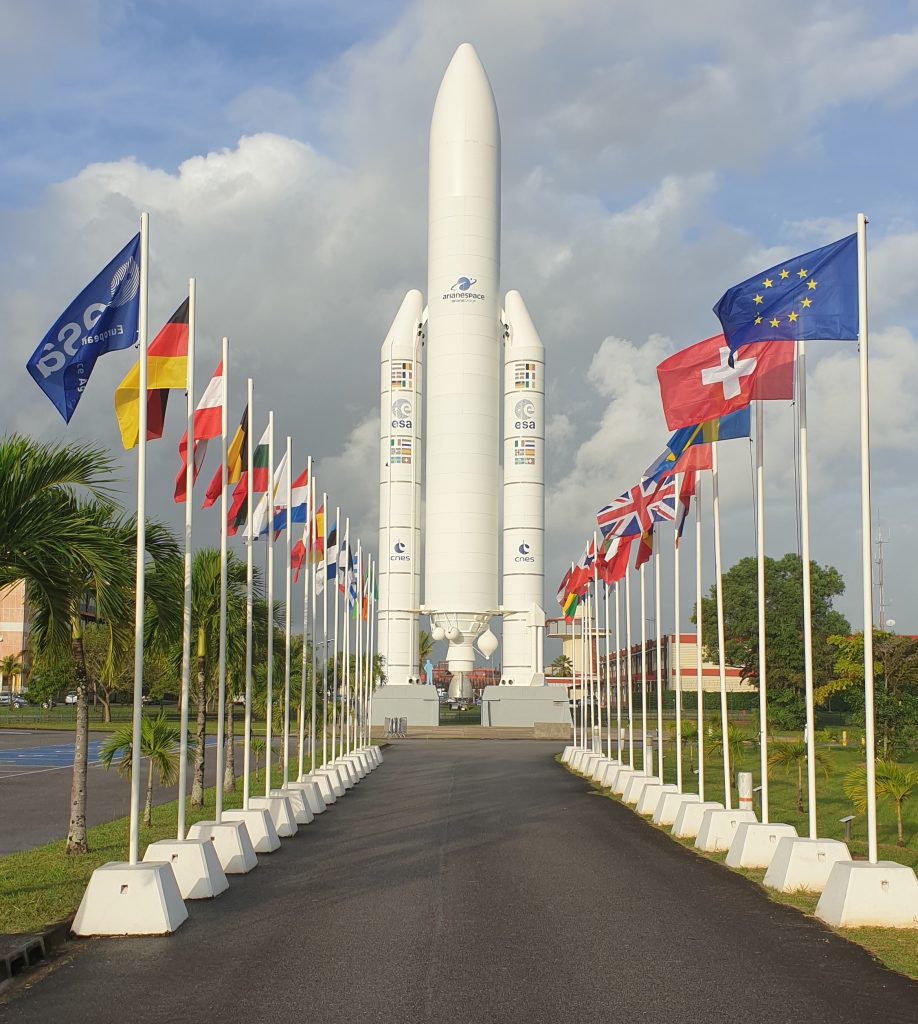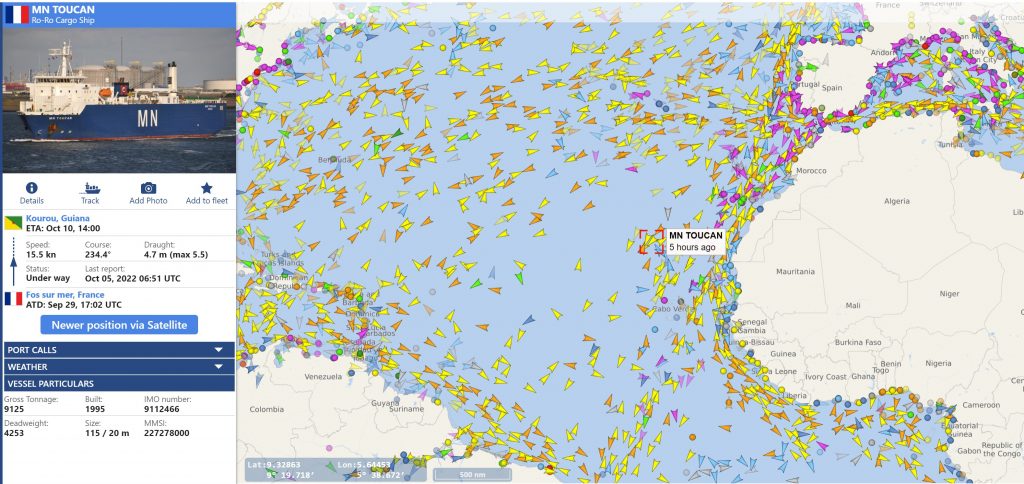So welcome back, it’s time for an update on the progress of the exciting last few months that the first of the next generation of European geostationary weather satellites will spend on earth.
The advance team has just left Europe and travelled to the Centre Spatial Guyanais (CSG) spaceport in Kourou, French Guiana, to be there about a week before the arrival of the satellite by boat, whilst the operations team is battling hard with a week of contingency simulations specifically designed to test the team with a series of unknown surprise scenarios to ensure they’re ready for any in-flight situation during the Launch and Early Operations Phase (LEOP).

So we say goodbye to ESTEC… (Credits: ESA)
In South America, an ESA team comprising members of the project team and IT specialists has just touched down in French Guiana along with teams from both Thales Alenia Space and Eumetsat to confirm the readiness of the spacecraft processing facilities at the Kourou spaceport prior to the arrival of the new meteorological imaging satellite.
There’s much to be done before the boat with its precious cargo, the MTG-I1 satellite, arrives next week, including the acceptance process of the cleanrooms and control rooms where the satellite and its associated Ground Support Equipment (GSE) will be housed over the next few weeks for the extensive final checkout activities, to confirm the satellite’s readiness flight following its transportation from Europe.

… and we say hello to the CSG spaceport. (Credits: ESA)
After the essential safety training, that’s necessary upon each visit to this hazardous working environment, first up is the setup of the offices that we’ll be making into our base for the next two and half months or so. This is where the IT specialists come into their own, as in only a day or so they will have the offices and essential communications back to Europe up and running.
In parallel, the advance team will help prepare the groundwork, before the specialist cleanliness team arrives on Sunday. The cleanliness team will formally review the overall cleanliness of the cleanroom, control room and airlock that the satellite, GSE and its container will use.
Unlike some other Earth observation satellites and traditional telecommunication satellites, the Meteosat Third Generation family of satellites have optical instruments, hence they are extremely sensitive to even the minutest amount of contamination. This means that they are built clean, with each individual lower-level component and piece part being assembled into subassemblies and subsystems and then integrated into the full satellite under the most stringent of cleanroom requirements. Then the satellites must be kept clean.
Consequently, the cleanliness check-out is an important part of the overall acceptance of the Payload Processing Facility (PPF), hence the need for the dedicated cleanliness team.
These are just a few activities to be undertaken over the next few days, but where is the MTG-I1 satellite now?

(Credits: Vesselfinder.com)
Thanks to vesselfinder.com we can track the MN Toucan boat and just before the advance team set-off for Kourou, it had passed the Canary Islands starting out across the Atlantic; whether or not the ETA is correct is still to be seen.
The next few days will see a huge ramp-up of MTG-I1 activities at the spaceport. As mentioned, the cleanliness team will arrive soon, closely followed by the expert team, that will help support the extensive final checkout of the satellite and preparation for launch.
In the next instalment we’ll bring you updates on the arrival of the boat, the offloading of the satellite container and its transportation from the harbour to the PPF. Check back to see how this goes!
Post from James Champion, ESA MTG Satellites Engineering & AITV Manager
Read more about the Meteosat Third Generation mission.

Discussion: no comments